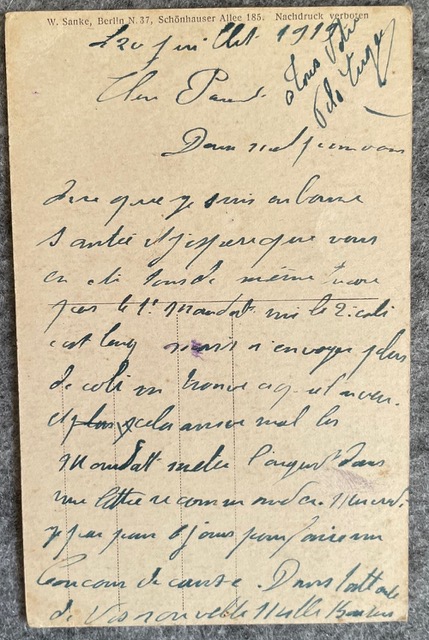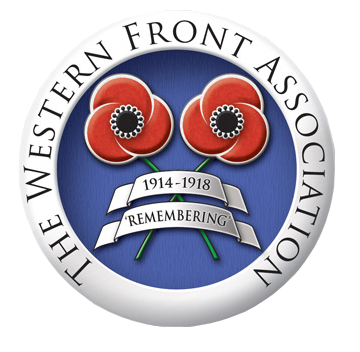Operation Türkenkreuz: the Gotha — The prelude
- Home
- World War I Articles
- Operation Türkenkreuz: the Gotha — The prelude
It was widely believed by 1917 that the airship menace had been conquered. The monsters in the skies had been defeated. However, another monster was just over the horizon. This was the ‘Gotha’, a purpose-built bomber with a wingspan of 77 feet (12 metres) and measuring some 40 feet (12 metres) long. These were to used under the command of the veteran Hauptmann Ernst Brandenburg and his ‘Englandgeschwader’. Its purpose to bring terror to England.

The ‘Englandgeschwader’ were to take part in Operation Türkenkreuz (Turk’s Cross). This was the operational name given for the planned bombing raids on London. The aim of this strategy was to force the British government to negotiate and pull out of the war. This it was believed would be forced by public opinion. The idea being that the morale of the British people would be destroyed by the bombing raids.

The man tasked with this was Hauptmann Ernst Brandenburg, a veteran wounded in the trenches in 1915 and subsequently took up a role in the army air service. He was well known for having a daily game of chess and for his tactics and training. In March 1917 he was appointed Commander of Kampfgeschwader 3 der Oberste Heeresleitung (Bomber Wing No. 3 of the Army High Command) or also known as the abbreviated Kagohl 3. Its three Staffeln (squadrons), each with 12 bombers, were based around Ghent in occupied Belgium. Unofficially, Kagohl 3 was known as the ‘Englandgeschwader’, the England Wing.
Brandenburg embarked on a major training programme for his Geschwader in preparation for the raids on England. The machines chosen to undertake this raid were part of the ‘G’ series of aircraft, the ‘Grosskampfflugzeugen’ (large bomber aircraft) and were produced by the Gotha company.


The Geschwader flew the G.IV which had a speed of 80 mph (128 km/h) and its operation flight was 18,000 feet (5,500 metres). With a wingspan of almost 78 ft (24 m) it was a colossus of the skies. Its two 260 hp Mercedes engines gave a distinctive hum, recalled by many who saw them flying overhead. Many never forgot the sound.
The Gotha G.IV had a crew of three, a commander, a pilot and a rear gunner. The aircraft was fitted with two machine guns and capable of carrying up to 400 kg of bombs. Although the crew flew in an open cockpit, exposing them to the elements, it was the most advanced and lethal bomber of its day. Crucially for Brandenburg and his Squadrons flying from Ghent in occupied Belgium, it had the range to reach London. Initially, they needed to refuel at an airfield close to the Belgian coast, but the Gothas were later fitted with extra fuel tanks, allowing an uninterrupted flight to London and back.

On the night of 6-7 May 1917, a lone Albatross C.VII flew over London at night, the first German aircraft to ever do so, and dropped five small bombs around the Holloway and Hackney area. One person died and two were injured. The aircraft returned to Belgium and encountered no opposition either from aircraft or anti-aircraft guns. This can justly be called one of a series of probing air raids designed to test Britain’s Home Defence system.
Due to the lack of Zeppelin raids and the need for experienced pilots on the Western Front the Home Defences had been scaled down. By March 1917, Home Defence pilots had been reduced from 130 to 71. Anti-aircraft coverage had also been drastically diminished with many being sent to be used by merchant shipping to help combat the German submarine threat.

This followed a recommendation from Field Marshal Lord French, commander-in-chief of British Home Forces on 6 March 1917 that ‘No aeroplanes or seaplanes, even if recognized as hostile, will be fired at, either by day or night, except by those anti-aircraft guns situated near the Restricted Coast Area which are specially detailed for the purpose.’ The reasoning behind this strange recommendation was to free up anti-aircraft crews so they could be sent to the Western Front. It was thought that the airship menace had been seen off and that the Home Defence system, set up to deal with the Zeppelin raids was no longer required at such a scale. Although intelligence sources warned of an impending larger raid by aircraft, this was ignored. This raid by a lone aircraft was viewed as a one-off incident by high command, with fatal consequences.
Article submitted by Gary Haines





